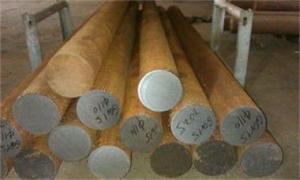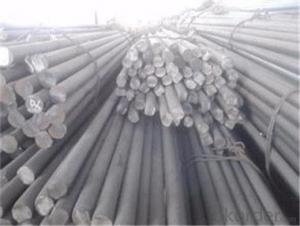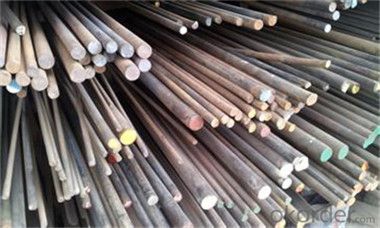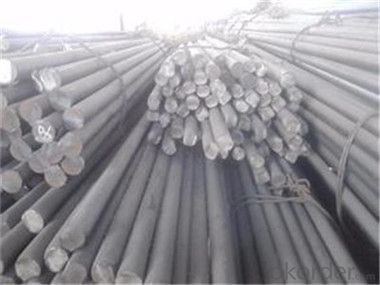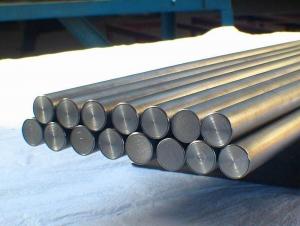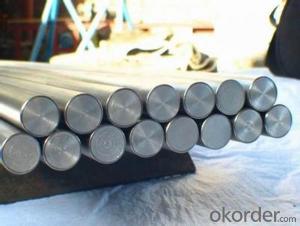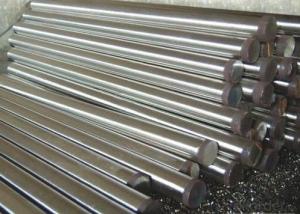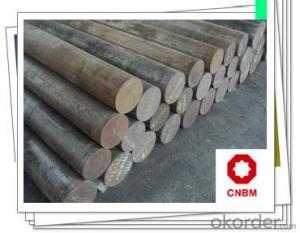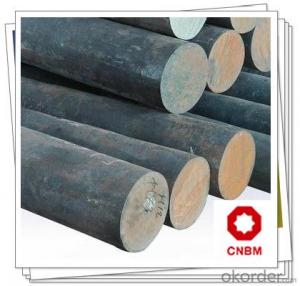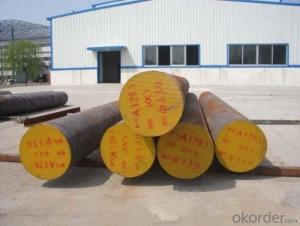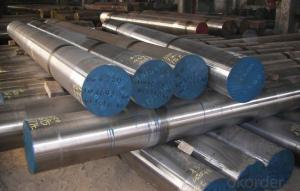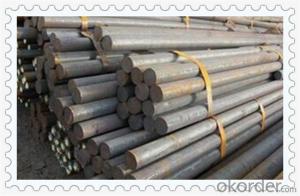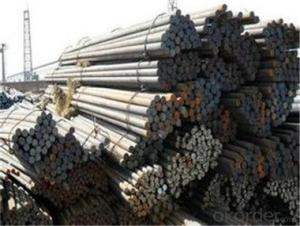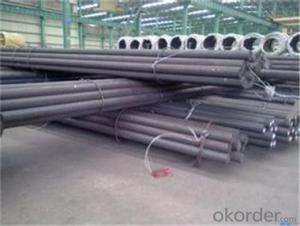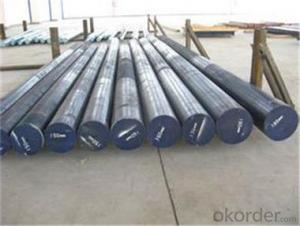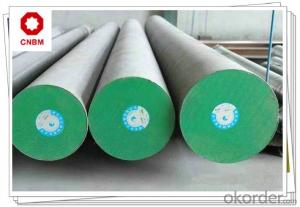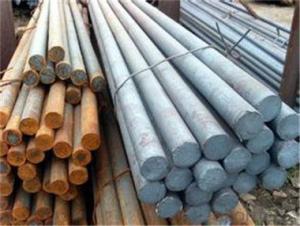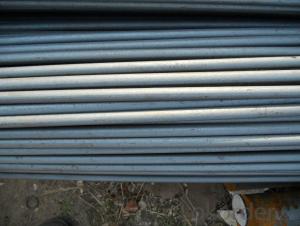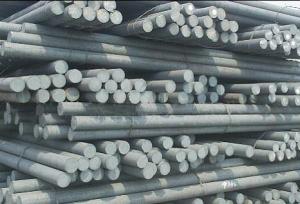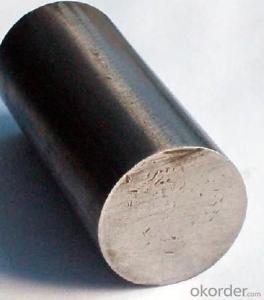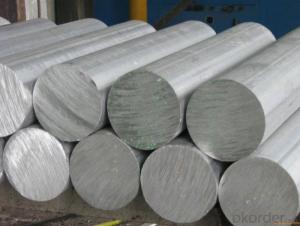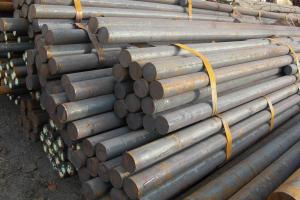Hard Chrome Carbon Steel Round Bar with Good Quality
- Loading Port:
- Tianjin
- Payment Terms:
- TT OR LC
- Min Order Qty:
- 223 m.t.
- Supply Capability:
- 2000000 m.t./month
OKorder Service Pledge
OKorder Financial Service
You Might Also Like
Description of steel round bar:
1.Diameter 80 to 800 mm
2.Black or Bright surface
3.Annealed or Quenched and tempered provided
4.Cutting service provide
Festures of steel round bar:
4340 Forged Round Steel Bar
1.Dia 80-800mm Length:2000-13000mm or as required
2.Technique:Forged
3.Delivery Time:45 days
Specifications of steel round bar:
Description |
Carbon Steel Rod/Carbon Steel Bar,carbon steel rod,carbon steel shaft,mild steel bar, mild steel shaft,ms bar | |
Material | ASTM | 1005,1006,1008,1010,1015,1020,1025,1030,1035,1040,1045,1050,1055,1060,1065,1070,1080,1084, 1016,1022 |
DIN | Ck10,Ck15,Ck22,Ck25,Ck30,Ck35,Ck40,Ck45,Ck50, 30Mn4,40Mn4 | |
BS | 040A04,095M15,045M10,080A40,045M10,080M50 | |
Standard | GB/T799,ASTM A29,A108,A321,A575,BS970,DIN1652,JIS G4051 | |
Section shape |
Round | |
Length |
As your required | |
Application | Carbon steel rod applies to chemical industry, shipping industry, manufacturing industry,construction,decorate Industry,electric power, pump shafts, sanitary wares,furniture handles,boiler,high temperature resistant,low temperature resistant, corrosion resistant. | |
Images of steel round bar:
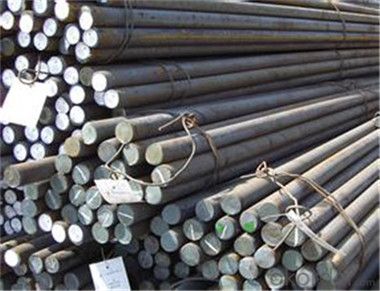
FAQ:
1. What is your package?
Packing situation: standard seaworthy packing or as customer required.
2. How long is the lead time?
Delivery time: 45 days after order confirmed.
3. What payment term do you accept?
Payment: T/T or L/C at sight.
- Q: What is the difference between a rough turned and a hot rolled steel round bar?
- A rough turned steel round bar is a type of steel bar that has been partially machined to remove imperfections and excess material, leaving a rough surface finish. This process helps to refine the dimensions and shape of the bar, making it more accurate and consistent. On the other hand, a hot rolled steel round bar is a type of steel bar that has been heated to high temperatures and then passed through a series of rollers to achieve the desired shape and size. This process results in a smooth surface finish and provides a uniform grain structure, which enhances the strength and durability of the steel. In summary, the main difference between a rough turned and a hot rolled steel round bar lies in the surface finish and manufacturing process used to produce them.
- Q: Can steel round bars be used in the manufacturing of electrical components?
- Indeed, the utilization of steel round bars is feasible in the production of electrical components. The malleable nature of steel renders it a flexible material that endows exceptional vigor and robustness, thus rendering it apt for a plethora of applications, including the manufacturing of electrical components. Steel round bars can be employed as linkages, connectors, or supports in electrical devices and apparatus. Consequently, they impart stability, reinforcement, and shielding to the electrical components, guaranteeing their optimal operation and protracted lifespan. Furthermore, steel is easily machinable, weldable, and moldable, thereby enabling manufacturers to tailor the round bars to the specific requirements of the electrical components. Nevertheless, one must bear in mind that depending on the precise application and environment in which they are employed, steel round bars may necessitate appropriate insulation or coating to prevent any electrical conductivity or interference.
- Q: Special steel bar steel products used to do what
- Carbon tool steel is high carbon steel basically contains alloy elements, the carbon content in the range of 0.65% ~ 1.35%, the production of low cost, easy to obtain raw materials, good machinability, after treatment can obtain high hardness and high wear resistance, so it is widely used in steel, used to manufacture all kinds of cutting tools, mold, measuring.
- Q: Are steel round bars resistant to chemicals or acids?
- Most chemicals and acids do not affect steel round bars, although the level of resistance varies depending on the specific steel type and the concentration and nature of the chemical or acid. Stainless steel round bars, on the other hand, have excellent resistance to corrosion and many types of acids. This makes them ideal for use in industries like chemical processing, food processing, and pharmaceuticals. However, it is worth noting that aggressive chemicals and acids, such as hydrochloric acid or sulfuric acid at high concentrations, can still cause corrosion or damage to steel round bars. In these instances, it is advisable to seek advice from experts or consult material compatibility charts to determine the most appropriate steel alloy for the intended application.
- Q: What are the advantages of using structural steel round bars?
- There are several advantages of using structural steel round bars in various applications. Firstly, structural steel round bars offer exceptional strength and durability. The circular shape of the bar allows for even distribution of weight and stress, making it highly resistant to bending and breaking. This strength is particularly beneficial in applications where the bars are subjected to heavy loads or extreme weather conditions. Additionally, structural steel round bars are highly versatile. They can be easily shaped and manipulated to fit specific project requirements, allowing for greater design flexibility. This versatility makes them suitable for a wide range of applications, including construction, manufacturing, and engineering projects. Another advantage of using structural steel round bars is their cost-effectiveness. Steel is a relatively affordable material, and the efficiency of the manufacturing process makes it a cost-effective choice for various projects. Furthermore, the durability and longevity of steel round bars reduce the need for frequent maintenance or replacement, resulting in long-term cost savings. Furthermore, structural steel round bars offer excellent resistance to corrosion. Steel is inherently resistant to rust and other forms of corrosion, making it highly suitable for outdoor or high-moisture environments. This resistance extends the lifespan of the bars and ensures their structural integrity over time. Lastly, structural steel round bars are readily available and easily sourced. Steel is a widely used material, and it is produced in large quantities, making it readily available in various sizes and grades. This accessibility ensures that steel round bars can be easily obtained, reducing project delays and increasing overall efficiency. In conclusion, the advantages of using structural steel round bars include exceptional strength and durability, versatility, cost-effectiveness, resistance to corrosion, and easy availability. These benefits make structural steel round bars a preferred choice for a wide range of applications, providing a reliable and efficient solution for various construction and engineering projects.
- Q: Can steel round bars be used in structural applications?
- Yes, steel round bars can be used in structural applications. They are commonly used in construction projects for their strength and durability. Steel round bars provide structural support and reinforcement in various applications such as beams, columns, and braces.
- Q: What is the difference between a smooth and a precision ground steel round bar?
- A smooth steel round bar refers to a steel rod that has a plain surface without any specific surface treatment or finishing process. It is typically produced through hot rolling or cold drawing methods, resulting in a basic cylindrical shape with a relatively rough surface texture. Smooth steel round bars are commonly used in various applications where a smooth exterior finish is not a critical requirement. On the other hand, a precision ground steel round bar undergoes an additional manufacturing process to achieve a more precise and refined surface finish. The precision grinding process involves removing any imperfections or irregularities from the surface of the steel rod, resulting in a highly smooth and polished finish. This process ensures that the diameter of the round bar remains consistent along its length and that the surface has a superior level of finish and accuracy. Precision ground steel round bars are widely used in applications that demand tight tolerances, precision machining, or where a smooth and polished surface is essential. Industries such as aerospace, automotive, tooling, and manufacturing often rely on precision ground steel round bars for their high-quality surface finish, dimensional accuracy, and reliable performance. In summary, the main difference between a smooth and a precision ground steel round bar lies in the surface finish and level of precision achieved. While a smooth steel round bar has a basic, rough surface texture and is suitable for general applications, a precision ground steel round bar undergoes additional grinding processes to achieve a highly smooth, polished, and accurate surface finish, making it ideal for applications requiring tight tolerances and precision machining.
- Q: How do steel round bars compare to other types of steel products?
- Steel round bars have several advantages over other types of steel products. Firstly, their cylindrical shape makes them highly versatile and easy to work with, allowing for various applications in construction, manufacturing, and engineering. Secondly, round bars have superior strength and durability, making them ideal for load-bearing structures and heavy-duty machinery. Additionally, their uniformity and smooth surface facilitate precision machining and fabrication processes. Lastly, steel round bars offer excellent resistance to corrosion and wear, ensuring a longer lifespan compared to other steel products. Overall, their unique properties and versatility make steel round bars a preferred choice for many industries.
- Q: Can steel round bars be used in the production of gears?
- Yes, steel round bars can be used in the production of gears. Steel round bars are commonly used as raw material for manufacturing gears due to their high strength, durability, and excellent mechanical properties. They can be machined, heat treated, and shaped into the desired gear profiles, making them suitable for various applications in industries such as automotive, machinery, and manufacturing.
- Q: Can steel round bars be used in the fabrication of machinery?
- Certainly, machinery fabrication can indeed utilize steel round bars. In the manufacturing industry, steel round bars are widely employed for a multitude of purposes, including the creation of machinery and equipment components. They possess numerous favorable qualities that render them suitable for this application. To begin with, steel round bars offer exceptional strength and durability. They are renowned for their high tensile strength, enabling them to withstand heavy loads and resist deformation. This strength is crucial in machinery fabrication, as the components must endure the stresses and forces encountered during operation. Moreover, steel round bars possess excellent machinability, allowing them to be easily shaped and formed into desired machinery components. This versatility permits the creation of intricate and complex machine parts. Furthermore, steel round bars exhibit remarkable resistance to corrosion and wear, which is vital in machinery fabrication. Machinery often operates in harsh environments or comes into contact with substances such as chemicals, oils, or abrasive materials. The corrosion and wear resistance of steel round bars ensure that the fabricated machinery can endure these conditions and maintain optimal performance over time. Lastly, steel round bars are readily available and cost-effective. They can be easily obtained from suppliers and manufacturers, making them a practical and economical choice for machinery fabrication. Overall, steel round bars are a favored and dependable material for machinery fabrication. Their strength, machinability, resistance to corrosion and wear, as well as their availability, make them an ideal option for creating durable and high-performing machine components.
Send your message to us
Hard Chrome Carbon Steel Round Bar with Good Quality
- Loading Port:
- Tianjin
- Payment Terms:
- TT OR LC
- Min Order Qty:
- 223 m.t.
- Supply Capability:
- 2000000 m.t./month
OKorder Service Pledge
OKorder Financial Service
Similar products
Hot products
Hot Searches
Related keywords
